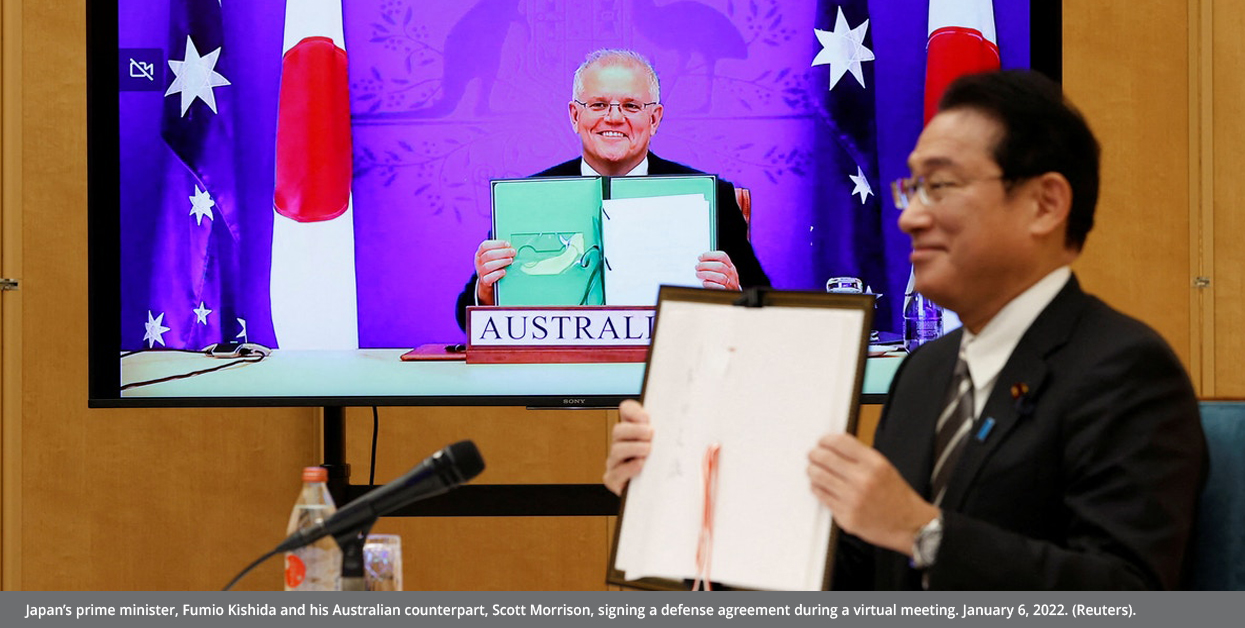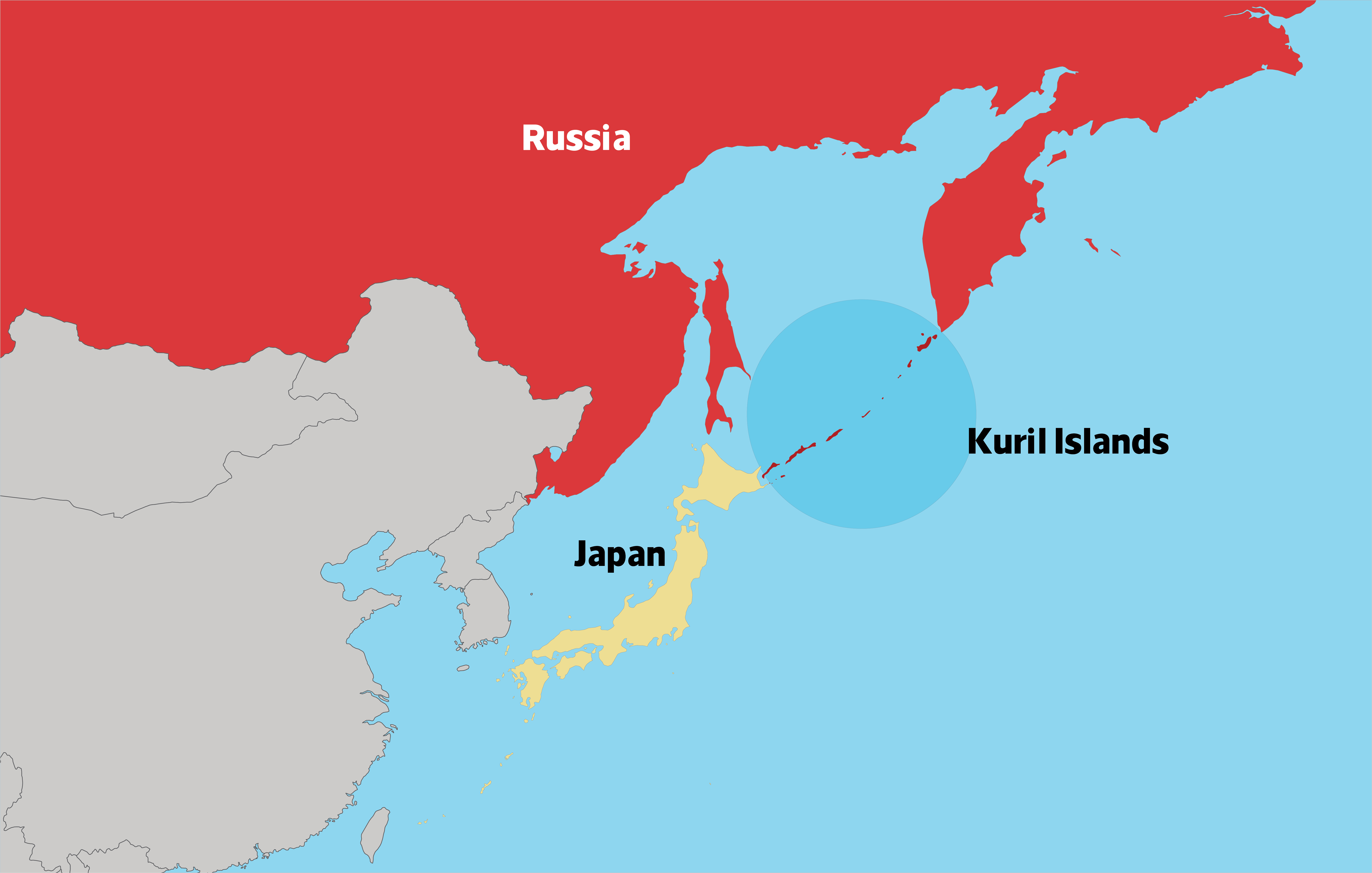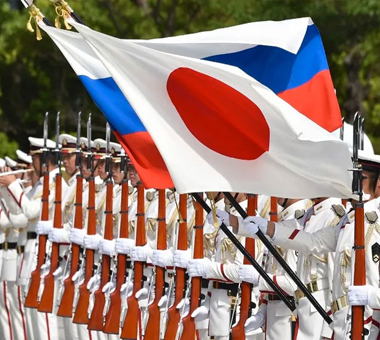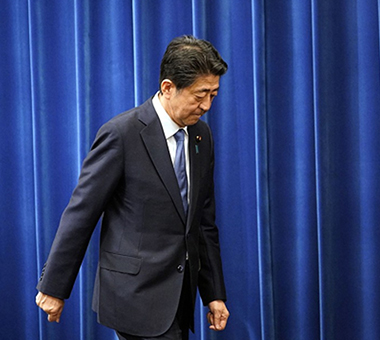Introduction
The Russian military operation in Ukraine, in February 2022, opened the door wide to many possibilities of geopolitical and strategic change at the international level. It brought back thorny files related to the dilemmas that occurred on the international scene after World War II. Such dilemmas remained without radical solutions until now, as in the thorny Asian files in Korea, China, India, and Japan. The international order, that emerged after World War II, is no longer able to respond to the challenges of the third decade of the 21st century, especially after the United States of America solely dominated the world order following the fall of the Soviet Union and the collapse of the socialist system. This was one of the most important messages of the Russian operation in Ukraine.
In this frame, the whole world is awaiting what changes Russia's military operation in Ukraine may have on the structure of the international order, affecting the status of the United States of America and its allies. These changes begin with opening some hot files, such as: Taiwan file in the Chinese case, Kuril Islands file in the Japanese case, in addition to other files that created a back yard for international conflicts, primarily; the U.S-Russia conflict.
1. Russian-Japanese Relations
Russian-Japanese relations combine both significance and complexity. These relations are problematic that passed through a historical path, shaped by wars and crises that continue to cast a shadow over the relationship of the two countries, particularly with regard to the Kuril Islands, which are four major Islands in addition to about 50 satellite Islands. The four Islands are about 300 km long, inhabited by about 20,000 people, separating the Okhotsk Sea from the Pacific Ocean.
The political conditions of these Islands have considerably fluctuated throughout history, where the Kuril Islands, since they were discovered by Dutch sailors in 1634, were under the control of the Russian side at times, and at other times under Japanese control. The sovereignty over these Islands altered according to the consequences of the wars, until Tokyo lost the Islands after World War II. Russian forces captured Kuril Islands on the basis of Potsdam Declaration 1945, in which the victorious Allies imposed Japan's "capitulation". The Japanese sovereignty was limited under article 8 to Honshu, Hokkaido, Kyushu, and Shikoku. Then, the Kuril Islands merged as Soviet territories in 1947. All the Island’s Japanese inhabitants were deported to Japan in 1949 as per a Soviet decision.
After the Islands were annexed to the Soviet Union, Tokyo signed the San Francisco Agreement in 1951, abandoning its rights to the Kuril Islands and areas south of Sakhalin Island in accordance with that agreement. In 1956 the two countries signed an agreement to re-establish their diplomatic relations, this coincided with a Soviet proposal to return the two smaller Islands of Kuril (Shikotan-Habomai) to Japan. But the latter refused at the behest of the United States, the matter that exacerbating tensions between the two sides, which reached a culmination in 1960 when Washington and Tokyo signed a strategic security treaty, under which Tokyo has allowed the presence of United States military bases in its territory. The U.S. and Japan have agreed to assist each other in the event of an armed attack on Japanese-administered territory, in addition to other provisions relating to international and economic cooperation.
Despite repeated attempts to resolve the Island crisis between the Japanese and Soviet sides during the 1970s, which was the decade that witnessed relations improvement between the USSR and Japan, the Kuril Islands issue, however, remained pending, until Moscow began implementing a new strategy based on expanding the military presence on those Islands, and maximizing economic use of its rich natural resources.
The beginning of the Islands crisis between Japan and the former Soviet Union, was a major dilemma in the course of relations between the two countries. The Islands issue is not merely a border dispute between Moscow and Tokyo, rather, it goes beyond to be of significant geopolitical and strategic dimensions, especially for Moscow. The Island issue represents an important foothold for the Russian army in the Pacific, a focal point that allows for the use of the non-frozen straits in this area, as well as being a gateway to protect the internal Okhotsk Sea. The Islands also a potentiality for the naval forces to launch towards the sea Pearl Harbor in the Hawaiian Islands, and the freedom of movement the Islands give for Russia's military fleets in its northern waters, which helps Russia monitor U.S. military activity in the region all at the strategic military level. This is in addition to the rich fisheries, large reserves of gas, oil, and rare metals, as well as being important to the Russian trade ambitions at the strategic economic level.
In the light of that strategic importance of the Kuril Islands in Russian policies, Moscow armed those Islands with missile equipment and infrastructure, in order to operate the Bastion systems, with a range of up to 450 km, enabling Russia to monitor the surrounding straits, and enabling it to bomb Japan at any moment Russia wants. To the same strategic importance for Moscow, it holds the four Islands firmly, especially fearing that Japan would establish United States naval bases if Russia abandoned them.
2. Japan’s Reactions Regarding the crisis in Ukraine
Following the Russian military operation in Ukraine in February 2022, the Japanese reactions, observers were not surprised with the Japanese foreign policy, due to the virtue of its relation to the Western policies in general, and to the U.S. policies in particular. Japan adopted positions that were largely consistent to those of the European Union and the United States of America, that can be monitored as follows:
- Prior to the start of the Russian military operation in Ukraine, Japan decided to impose sanctions package against Moscow, for recognizing the independence of the Luhansk and Donetsk regions.
- In early March 2022, Japan supported a UN General Assembly resolution calling on Russia to halt its military operations in Ukraine, and withdraw its troops completely and unconditionally from Ukrainian territory, while Tokyo pledged $200 million in emergency humanitarian assistance and $600 million in financial assistance to Ukraine.
- Japan joined the United States of America, and other European countries, in imposing economic sanctions on Russia. Japan restricted dealings with the Central Bank of Russia and the Banks of Sberbank and Alpha Bank, froze the assets of President Vladimir Putin and other government figures, began banning and restricting imports of Russian machinery, timber, and vodka. Tokyo reserved the Russian decision to accept the price of gas in rubles.
- On March 21, 2022, Moscow announced that it officially withdrew from the negotiations on a permanent peace treaty with Japan.
- In early April 2022, the Japanese government announced the expulsion of a number of Russian diplomats. Moscow responded similarly later in the same month.
- Japanese Foreign Minister, Yoshimasa Hayashi, announced his country's readiness to receive Ukrainian refugees during a meeting with his Ukrainian counterpart, Dmitry Koliba, in Warsaw, Poland. The Japanese Defense Minister participated in meetings of defense ministers from 30 countries, as part of the Ukrainian Security Advisory Group held at the German base of Ramstein in May 2022.
- Japanese Prime Minister, Fumio Kishida, said that his country would gradually halt oil imports from Russia, while maintaining Japanese projects in Russia's Sakhalin region. This was followed by Tokyo's announcement that it would completely stop using Russian coal. Japan also joined the G7, which pledged about $8 billion in support for Ukraine's budget, and imposed the largest package of economic and financial sanctions on Russia.
- Japan participated in NATO summit meetings in Spain for the first time since the alliance was established in 1949. The Japanese prime minister stressed his country's efforts to update the partnership document with NATO in order to enhance the cooperation in the areas of cyber and maritime security. He also condemned Russia’s military operation in Ukraine, adding that he felt a "strong sense of crisis" regarding the possibility of a conflict similar to that in Ukraine in East Asia.

3. Ukraine’s Crisis Implications on the Defensive Policy of Japan
Japan's defense policy is not new, nor it was a result of the Russian-Ukrainian crisis. It is a policy governed by Japan's position within the Western strategy in general, and the U.S. strategy more specifically. The rules of that policy were established following Japan's defeat and surrender in World War II. In such context; experts believe that Tokyo became an important component of the U.S. strategy, enjoying the U.S. nuclear umbrella, in exchange for giving Washington military bases and facilities. This situation remained until Tokyo became a key pillar of U.S. strategy in the region.
However, several additional trends of Tokyo could be monitored in this regard. Such trends consist of several changes in Japan's defense policy patterns, even before the outbreak of the Russian military operation in Ukraine, through the following:
First: concluding partnership agreements augmenting Japan’s strategic and military abilities, such as:
- On January 6, 2022, the Australian prime minister and his Japanese counterpart signed a defense agreement (called the Reciprocal Access Agreement, RAA) which helps to deploy faster personnel to the defense forces of the two countries. The Agreement also eases restrictions on the transfer of weapons and supplies for joint training operations. In addition, the two countries' participation with the United States and India in an informal group “Quad”, which sought -in recent years- to counter Chinese threats to vital Pacific sea lanes.
- Japan signed an agreement with Thailand, that includes the possibility of supplying defense equipment from Japan, as part of Bangkok’s recent support. The Agreement also expands the cooperation in the field of security guarantees, as a clear message to China.
- The move to strengthen Japan’s military alliances is reflected in Tokyo's announcement of intention, May 2022, to sign a defense agreement with London, to train the forces of the two countries. This is a reference to a British role in the Indian and Pacific Ocean region.
- Japan announced dispatching troops for annual military exercises between the Indonesian and U.S. armies with the United Kingdom, and fourteen other countries in the Sumatra archipelago and Borneo Island, amid rising tensions with China in the South China Sea.
- The Security Agreement between the United States of America and Japan, signed in the 1950s and renewed in 1960, cannot be overlooked. As per such Agreement, the two sides agreed to assist each other in the event of an armed attack on Japanese-administered territory. In addition, the U.S. and Japan 1978 signed defense cooperation guidelines, defining the role of the armed forces in each country, where Washington and Tokyo have regularly conducted joint military exercises.
Second: The Change of "Japanese National Security" Concept
More discussions in Japan addressed the concept of its national security, especially given its ever-tense geopolitical position: Japan is surrounded by China from the South, nuclear-armed North Korea from the West, and Russia from the North. So, members of Japan's ruling party, in April 2022, proposed raising the defense budget from 1% to 2%, in order to match the planned proportions of NATO members.
Some voices have also called for amending the Japanese Constitution, in order to strengthen Japan's ability to respond and acquire nuclear weapons, as Japanese Prime Minister Fumio Kishida put it: "All options will be available when it comes to defending Japan". The need to amend the constitution surfaced as a new focal point for Japan's new concept of national security, particularly in article 9, which imposed on Japan to abandon war as a sovereign right of the state forever, or to carry out any acts of aggression or threats of violence as a means of resolving international conflicts. Meanwhile, the neighboring countries; North Korea and China, develop their nuclear weapons.
In the same vein, Tokyo recently announced its intention to reactivate some of its nuclear reactors, which have been suspended since 2011, despite the domestic opposition to the measure, due to fears of potential disasters as the country is frequently hit by earthquakes. Japan changed its tone in the Foreign Ministry's April 2022 diplomatic book, describing the Kuril Islands as "illegally occupied by Russia and an inherent part of Japanese territory," a description not mentioned since Reports issued in 2003.

Conclusion
Throughout the previous presentation, it is clear that the Russian military operation in Ukraine was not, by itself, the originator of the Japanese strategy, as much as it was revealing Japan’s strategy and foreign policies, in the light of the complex balance calculations in the region, as evidenced by a series of related indicators. Japanese policy came within the framework of its traditional movement is consistent with the general orientation of U.S. policy and other allies to stabilize the Western alliance against Russia and China at a certain respect. It also as reflected the Japanese position the state of the continuing "Cold War" Since World War II between Tokyo and Moscow, where the two sides did not reach a peace agreement, the issue of the Islands has remained a hotbed of tension employed in the context of U.S.-Russian conflict interactions.
In addition to these indicators, Japan's move to modify its defense policy and double its military spending were not born for the present moment, as Japan has a huge industrial base, being the third economic power in the world, and the first iron and steel producer. Japan was recently allowed to build three giant aircraft carriers and marine infantry weapons, manufacture F15-F16 aircraft and export them to other countries. In 2015, Japan passed new laws allowing it to deploy troops abroad. Japan also joined allies in military operations in military operations. The Horn of Africa is currently providing logistical resources effectively to Ukrainian forces in combat zones against Russia. Japan currently has about 250,000 troops in Japan's Self-Defense Forces (Jieitai), as well as 60,000 U.S. military troops. In April 2022, a poll conducted showed that nearly two-thirds of Japanese support strengthening their country's defense capabilities, away from the United States, especially after confusion under former U.S. President Donald Trump.
Japan's announcement of its intention to phase out its oil imports from Russia, comes despite the fact that the latter provides it with only 3.6% of these imports. This comes as another indicator of the exposure of Japanese policy after the Russian-Ukrainian crisis, even as Japan announces that it will maintain its projects in Russia's Sakhalin region, and that it will not withdraw its companies from there as the United Kingdom has done, in order to preserve its economic interests and certainty that China will be an alternative if it withdraws from there.
As for Japan's reported refusal to move toward developing its nuclear capabilities, some experts monitored the call of the late Prime Minister, Shinzo Abe, to reconsider the idea of outlawing the deployment of nuclear weapons on Japanese territories. Facts show that Tokyo has scientific expertise, and about 90% of the plutonium needed to produce nuclear weapons, as well as the program to reprocess nuclear fuel consumed at peaceful nuclear plants.
Finally, it is important to note that the countries of the region, including Japan, are concerned about the rise of Chinese influence. However, by virtue of their organic association with Beijing's strong economy, which cannot be isolated internationally or even compared to the Russian economy. The region countries are obliged to follow an appeasement policy China in security and military regards, especially in the absence of confidence in the absolute reliance on the U.S. role in the region, after the bitter experience of Trump's policies, and his withdrawal from the Trans-Pacific Partnership agreement in 2017 "TPP", which gave way to China's influence in the region to grow. So, Japan will seek to maintain good and dynamic relations with China without slipping into any possible confrontation.
The opinions expressed in this study are those of the author. Strategiecs shall bear no responsibility for the views and/or opinion of its author on security, economic, social, and other issues, as they do not necessarily represent the views of the Think Tank.
Keep in touch
In-depth analyses delivered weekly.
Related Analyses:








